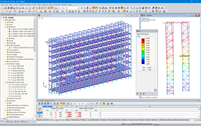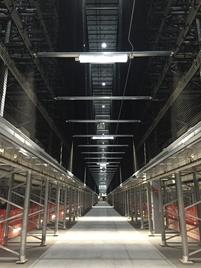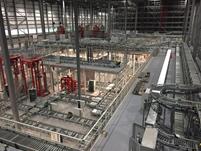NEDCON is an independent company that produces storage systems and has been part of the international steel group Voestalpine AG since 2004. The headquarters are located in Doetinchem (Netherlands), and the production activities take place in Pardubice (Czech Republic). In addition, NEDCON has divisions in various European countries as well as in the United States.
Structure and Design
NEDCON designed a steel structure for automated stacker cranes (AS/RS) consisting of a crane‑operated steel storage pallet rack and a large surface with stages for equipment. The dimensions of the building are 260 m x 0190 m (853 ft x 623 ft) – more than two football fields. The total racking capacity per project is more than 38,000 pallets.
Several steel storage racking systems with a height of approximately 22.5 m (74 ft) were built. The structural members utilized are made of thin‑walled steel sections. The structure consists of diagonally braced upright frames. They are connected by beams carrying product loads resulting from pallets.
In the longitudinal direction, the structure contains no crossing diagonals. The stiffening is carried out by semi‑rigid (hooked‑in) beam‑to‑column connections. This, together with a high‑weight load resulting from the stored products, leads to very high sensitivity to second-order effects.
The seismic loads made the design even more challenging. The challenge was to analyze the displacement of the rack in the serviceability limit state (SLS) in order to comply with the extremely low deformation limits. This would ensure proper performance of the system in combination with automated storage and retrieval machinery.
3D modeling and geometrical nonlinear analysis were carried out in RFEM. The RF‑DYNAM Pro add‑on module was used to account for seismic loads specified by the US (IBC 2012 and RMI 2008) and Canadian (NBCC 2010 and RMI 2008) design codes.
Certain members of the structure are susceptible to lateral‑torsional buckling. For these structural components, lateral‑torsional buckling analyses were performed with RF‑FE‑LTB. The results were compared with and validated by physical tests.
| Structural Engineering | NEDCON B.V. Netherlands www.nedcon.com |
.png?mw=760&hash=d27b11ab75fd8a8c45377bbdadac4726b58e9a9f)





